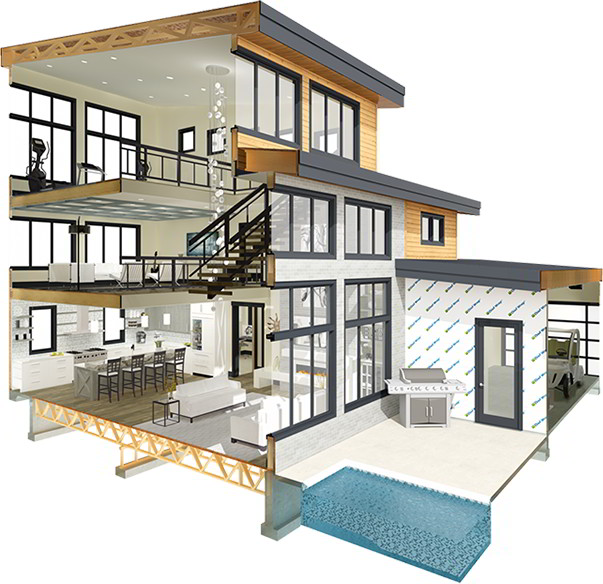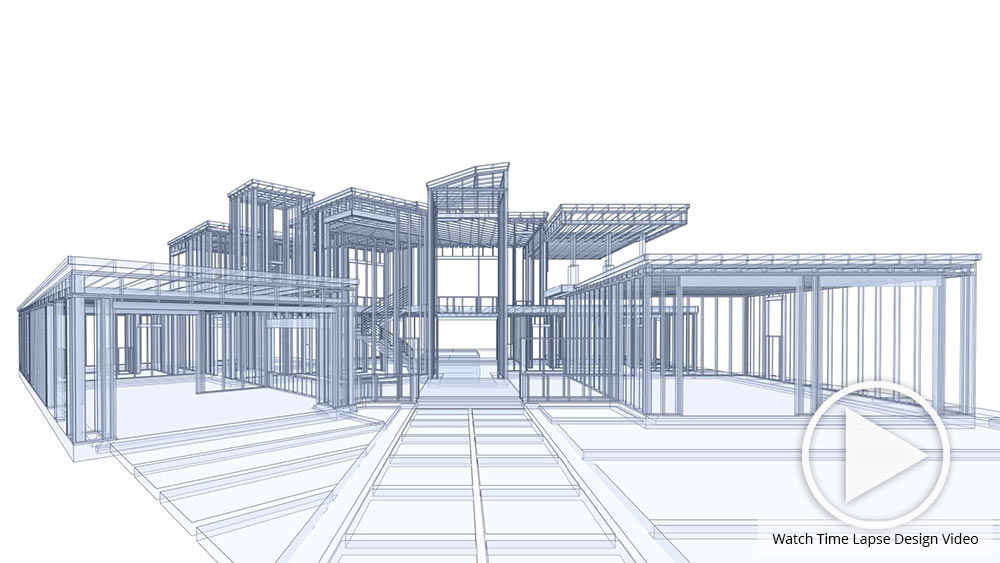Top Factors to Select CDA Architects for Your Residential or Commercial Layouts
Top Factors to Select CDA Architects for Your Residential or Commercial Layouts
Blog Article
The Effect of Technological Innovations on the Layout Practices of Contemporary Architects
The quick development of technological devices has actually substantially reshaped the design landscape for modern designers, fostering unprecedented degrees of technology and sustainability. The combination of Building Information Modeling (BIM), parametric design, and expert system has not only streamlined collaboration amongst diverse teams but additionally redefined job execution. As architects accept these developments, they are challenged with complicated obstacles that could influence their innovative procedures. Exploring these characteristics reveals a nuanced interplay between modern technology and traditional layout approaches, motivating a closer assessment of what the future holds for building methods.
Development of Architectural Tools
How have building devices changed the design and building processes over the centuries? The advancement of architectural devices has substantially influenced the efficiency, accuracy, and creative thinking of design and construction.
With the advent of the Renaissance, the intro of the compass and the protractor noted an essential shift. These tools enabled engineers to attain better precision in their styles, assisting in the introduction of more elaborate and in proportion buildings. The Industrial Transformation even more reinvented building practice with the introduction of mechanical devices and products, permitting for bigger and much more ambitious jobs.
In the 20th century, the growth of computer-aided layout (CAD) software transformed the landscape as soon as again, supplying engineers with unprecedented capacities in modeling and visualization. Today, advanced tools such as Building Information Modeling (BIM) and parametric layout software program continue to press the borders of building innovation, allowing a much more integrated approach to design and construction processes.
Enhanced Cooperation in Layout
As innovation remains to evolve, enhanced partnership in style has actually ended up being a cornerstone of modern-day architectural technique. The combination of digital devices such as Building Info Modeling (BIM), cloud-based systems, and advanced visualization software program has transformed the way engineers, engineers, and stakeholders interact throughout the layout process. These tools facilitate real-time interaction, allowing groups to share ideas, modifications, and feedback promptly, no matter of geographical location.

Additionally, interdisciplinary cooperation has actually been structured with these technical innovations, enabling engineers to work more carefully with other experts, such as city planners and environmental specialists. The outcome is a much more natural method to create that thinks about numerous perspectives and know-how. Inevitably, enhanced cooperation in layout is not merely a trend; it is vital for producing ingenious, practical, and aesthetically pleasing style in a significantly complicated world.
Sustainability With Technology
Sustainability in style has significantly become linked with technological technology, driving the market towards ecologically liable methods - cda architects. Contemporary engineers are leveraging sophisticated technologies to decrease environmental influence while improving the performance of buildings. One prominent instance is using Structure Details Modeling (BIM), which permits exact planning and source allotment, reducing waste throughout building and promoting power effectiveness throughout a structure's lifecycle
Moreover, clever materials and energy-efficient systems are being incorporated into layouts to optimize source use. Technologies such as solar batteries and environment-friendly roofing systems harness renewable resource resources, adding to reduced carbon impacts. Additionally, the application of expert system in design procedures allows engineers to mimic and assess energy intake, assisting choices toward even more lasting outcomes.
The integration of lasting modern technologies not only lines up with international ecological objectives yet additionally meets a boosting need from consumers for environment-friendly remedies. As engineers welcome these developments, the focus moves in the direction of developing hop over to these guys spaces that are not only aesthetically pleasing but additionally functionally lasting, consequently redefining the requirements of modern architecture. By doing this, modern technology offers as a driver for sustainability, enabling engineers to create buildings that respect and improve the natural atmosphere.
Obstacles in Implementation
While technological innovations in design hold excellent guarantee for boosting sustainability, their application frequently runs into considerable challenges - cda architects. One main obstacle is the high knowing contour associated with brand-new innovations. Engineers and building and construction experts might need comprehensive training to properly utilize advanced software program and tools, which can postpone job timelines and Visit This Link raise expenses
In addition, the assimilation of arising innovations, such as Building Info Modeling (BIM) and sustainable materials, frequently requires collaboration throughout multidisciplinary teams. This partnership can be impeded by distinctions in proficiency, operations, and communication designs, resulting in prospective disputes and inadequacies.
Financial restrictions further make complex the adoption of cutting-edge innovations. Several architectural companies, especially smaller ones, might do not have the resources to buy advanced devices, limiting their ability to complete with bigger companies that can manage such investments.
In addition, regulatory frameworks and building codes may not equal technical innovations, developing obscurity and possible conformity concerns. This obstacle can inhibit engineers from totally welcoming brand-new modern technologies, as the risk of non-compliance may exceed the benefits. Dealing with these application difficulties is vital for the effective assimilation of technical innovations in modern building methods.
Future Fads in Style
The obstacles connected with the application of new innovations in style have prompted a reevaluation of future trends within the sector. As engineers browse issues such as sustainability, urbanization, and social equity, they are progressively embracing ingenious innovations to boost style efficiency and ecological performance.
One popular fad is the combination of fabricated intelligence (AI) in the layout process. AI tools can analyze huge datasets to inform layout decisions, enhancing both creative thinking and performance. Likewise, Building Details Modeling (BIM) remains to progress, making it possible for real-time cooperation amongst stakeholders and promoting structured job monitoring.
Sustainable layout methods are also obtaining momentum, with designers concentrating on adaptive reuse and regenerative layout principles that decrease resource usage and waste. The unification of smart materials and renewable resource sources will additionally enhance the durability of structures despite climate modification.

Final Thought
Technical innovations have significantly reshaped architectural style methods, assisting in enhanced precision, partnership, and sustainability. The assimilation of devices such as Structure Details Modeling and parametric layout software program, together with man-made knowledge and smart products, equips architects to resolve complicated challenges more effectively. While execution may present specific obstacles, the ongoing development of these innovations assures to drive advancement in design. Future fads will likely additionally emphasize sustainability and performance, eventually redefining the built setting.
Report this page